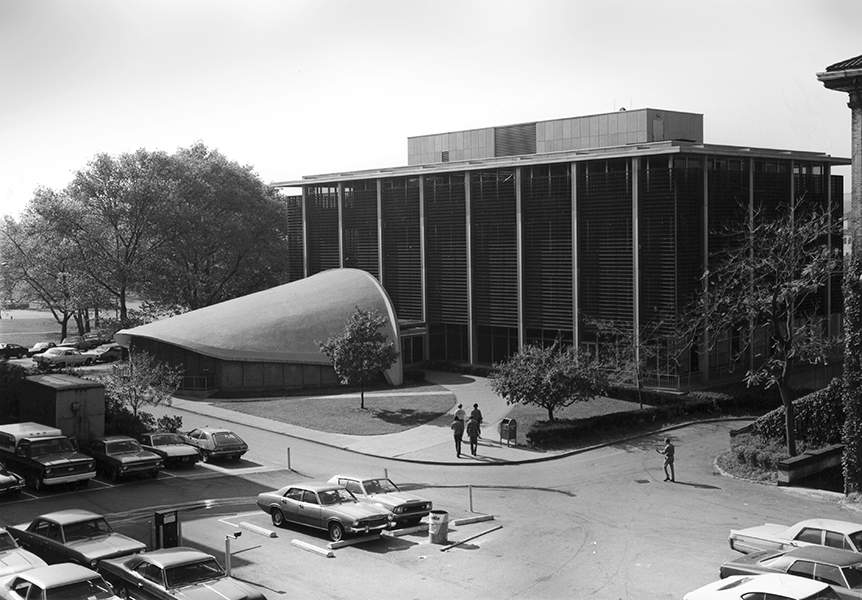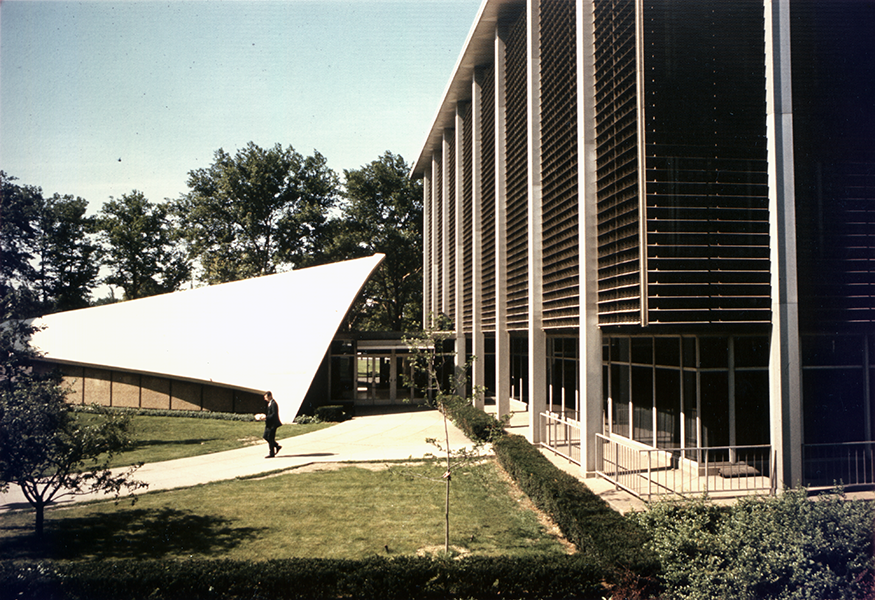A new chapter for Scaife Hall
With a generous lead grant from the Allegheny Foundation, the university has announced plans to build a new Scaife Hall.
1962 was the year of John Glenn’s Earth orbit, the Beatles’ first hit, Spider-Man’s creation, and Silent Spring’s warning. It was also the year that the Alan M. Scaife Hall of Engineering opened on Carnegie Tech’s campus. The building’s state-of-the-art computer, occupying the entire fourth floor, had less processing power than today’s handheld smart phones (and required a helicopter to carry it into position). At the time, no one could have envisioned how far and how fast technology would change during the next five decades.
Over the years, technology transformed and enrollment grew. Today, the Department of Mechanical Engineering boasts one of the largest academic majors at Carnegie Mellon University with more than 440 undergraduate students. Master’s and Ph.D. students number nearly 400, with more doctoral students enrolling in the fall of 2018 than in the department’s history. Until now, the amount of space had remained about the same.
The demand for mechanical engineers—and for Carnegie Mellon’s innovative approach to real world problem solving through advanced collaboration—is stronger than ever.
Allen Robinson, Professor and Head, Department of Mechanical Engineering
With a generous lead grant from the Allegheny Foundation, the university has announced plans to build a new Scaife Hall. The building will feature expanded, technology-rich labs; modern, flexible classrooms; and spaces that facilitate formal and informal collaborations. The new building will more than double the size of the existing one, expanding the footprint on Frew Street and forming an engineering and maker quad with Hamerschlag and ANSYS Halls.
“The demand for mechanical engineers—and for Carnegie Mellon’s innovative approach to real world problem solving through advanced collaboration—is stronger than ever,” said Allen Robinson, professor and department head of mechanical engineering.
“High quality, state-of-the-art labs and classrooms are critical for educating the next generations of world-class engineers,” he said. “With reconfigurable classrooms and modern learning areas, we can accommodate both the growing number of mechanical engineering students and the need for flexible work spaces for hands-on courses.”
While the future of engineering education requires a different type of classroom, the future of research requires a very different type of laboratory. “Collaborative interactions between researchers just don’t occur when you have small, fragmented labs organized around traditional disciplines,” said Robinson. “For emerging fields like biohybrid robotics and nanoengineered materials, it is essential to connect researchers with different expertise to inspire multidisciplinary collaboration.”
The new Scaife Hall will offer another important improvement: the opportunity to develop a stronger sense of community between the students, faculty, researchers, and staff. As mechanical engineering students outgrew the existing building’s smaller classrooms, they spent less time in the building where their professors had offices. Robinson saw this as an obstacle. “We want to encourage the kind of interactions that sometimes only happen when you bump into your professor in the hall and start up a conversation.”
The lead grant from the Allegheny Foundation was announced by President Farnam Jahanian during his Inauguration on October 26. A new chapter for Scaife Hall begins.
For more details, read the university’s press release.
Header photo: Image of an artist's conception of the new Scaife Hall.




